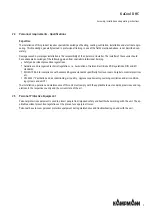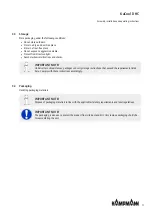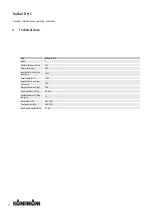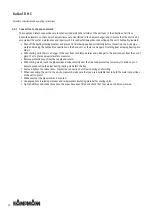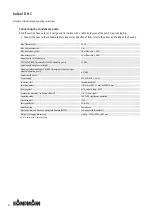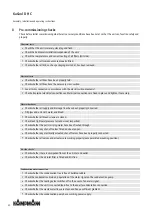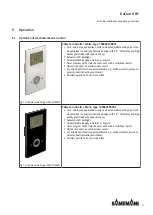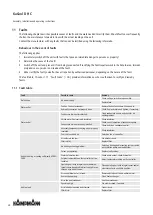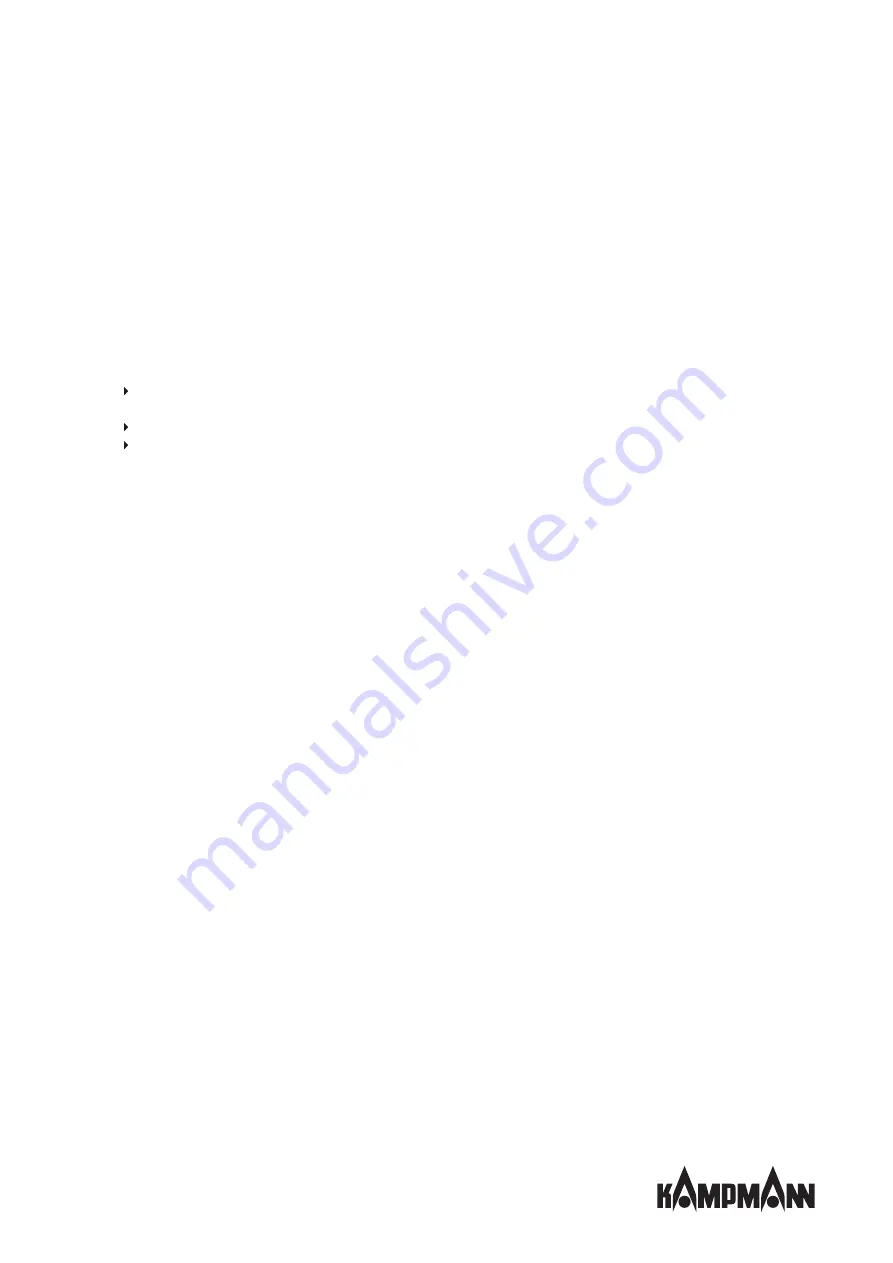
KaCool D HC
Assembly, installation and operating instructions
23
6.5.4.2
Condensate drainage using a condensate pump (accessory)
The water is drawn off by the condensate pump and discharged along a hose (supplied loose) connected on the pressure
side. Depending on conditions on site, the water can be discharged into drainage lines, possibly with a trap connection.
In the event of a fault with the condensate drain, the water level will continue to rise until the float switch triggers an alarm
contact. The contact can be analysed by external signalling devices.
We recommend automatically terminating cooling mode, possibly with a shut-off valve, if the alarm contact is triggered to
prevent the condensate tray from overflowing.
Condensate drain
Drainage of condensate from the condensate pump must be along a natural gradient with an adequate cross-section
(minimum 1/2"). Increase the cross-section of the line with longer condensate lines.
Check whether the condensate line needs to be insulated to prevent the build-up of condensate along the line.
Do not use a rigid transition to the on-site condensate drain, as this lengthens the pressure hose of the pipe. We recom-
mend free overflow into a trap.
Installation, cabling of the condensate pump (accessory)
The condensate pump is electrically connected in the factory and fused by the T4A unit fuse. The alarm contact can be tapped
to terminals ‘C-AP’ as a potential-free contact max. 250 V/ 2 A or as a non-floating contact (230 V AC) to terminal ‘Cp’. Con-
tact ‘C-AP’ is closed or terminal ‘Cp’ carries 230 V AC in a fault-free state.

